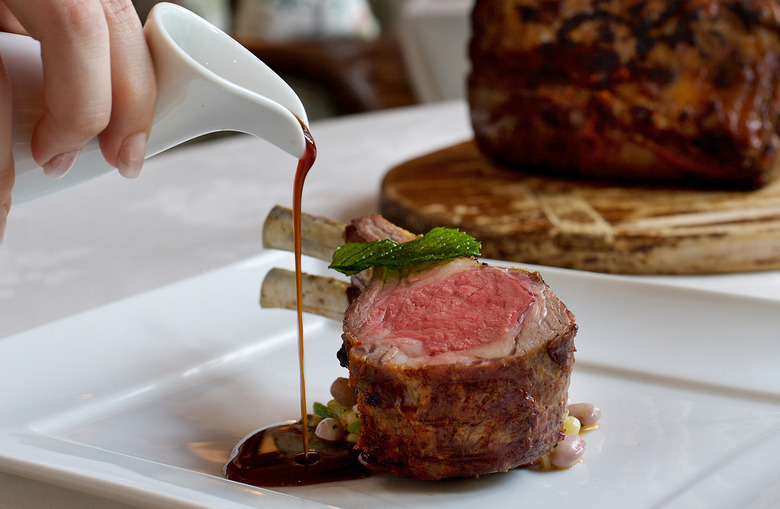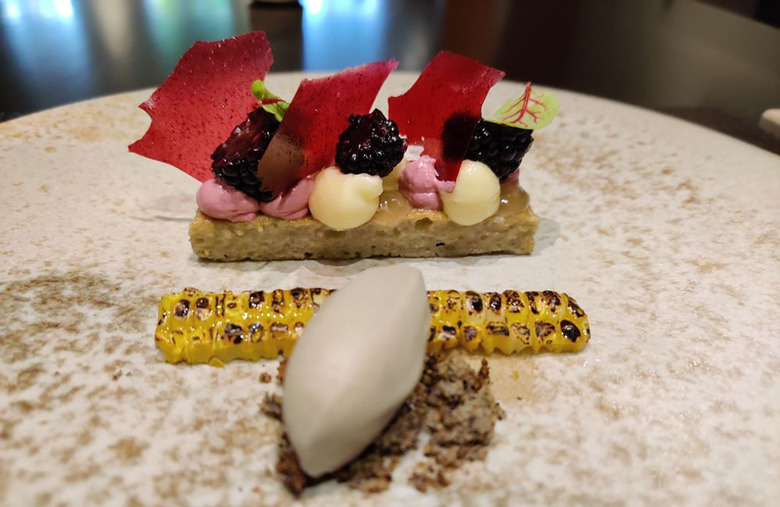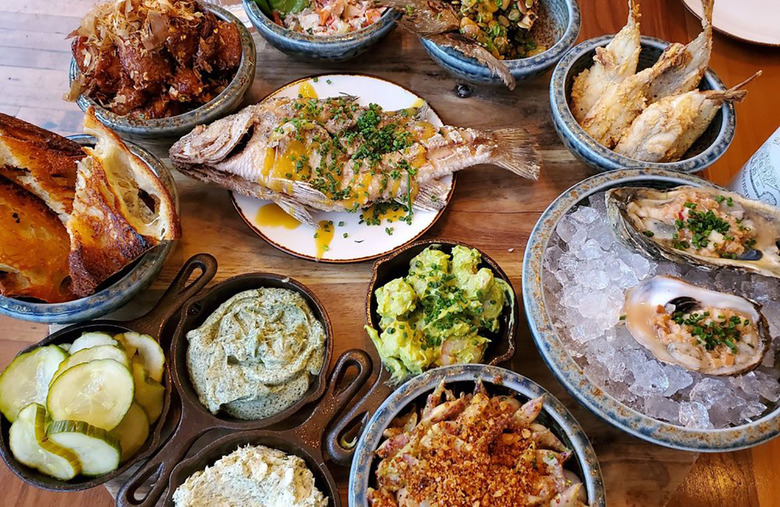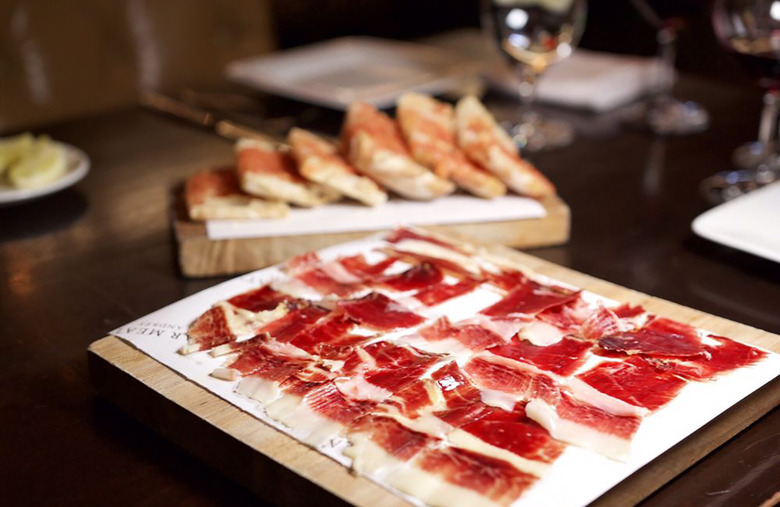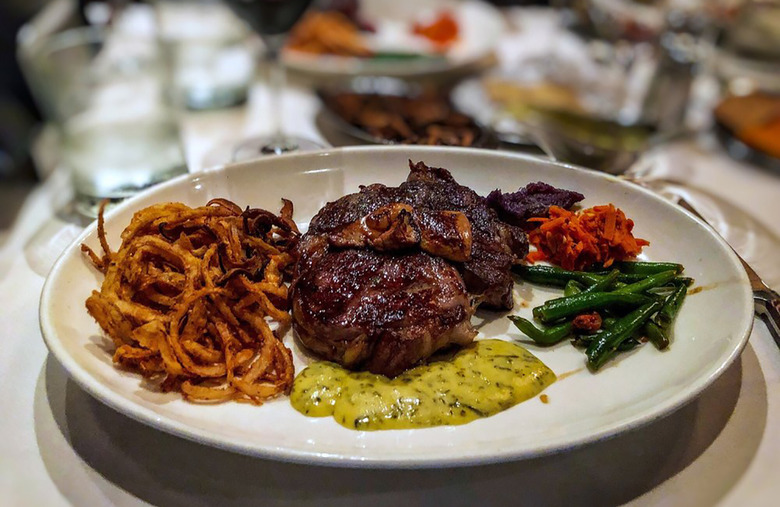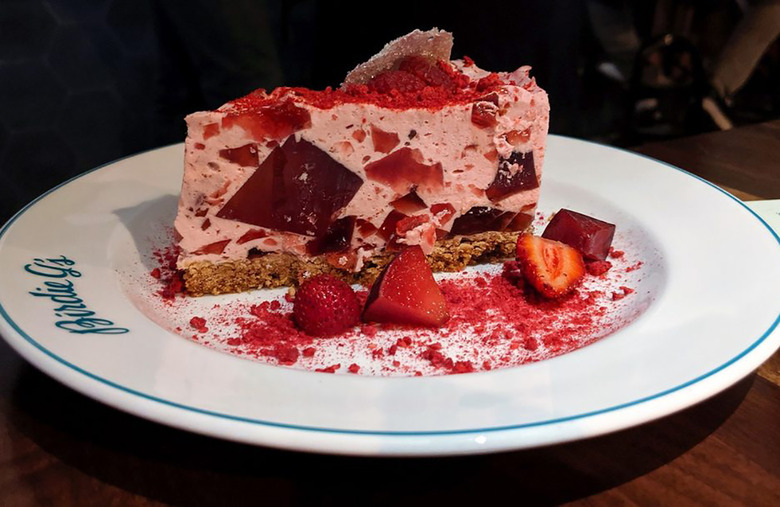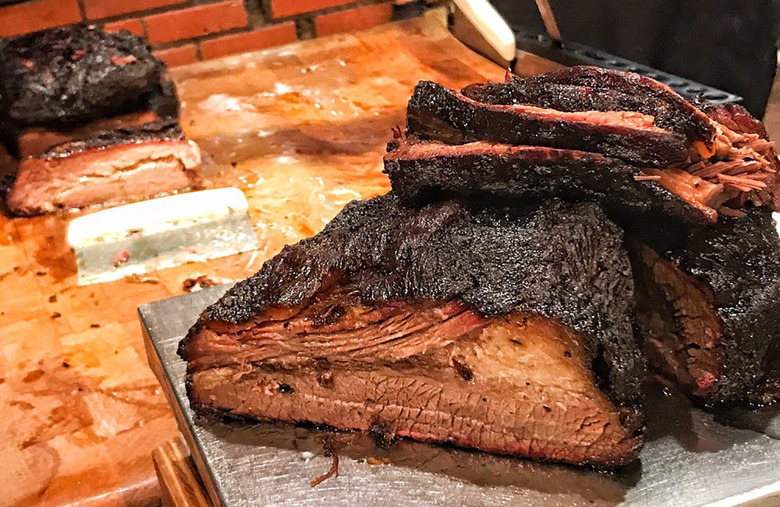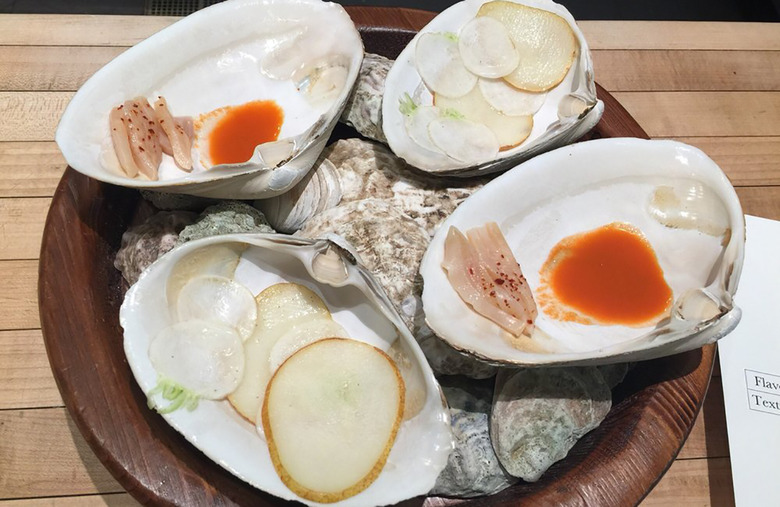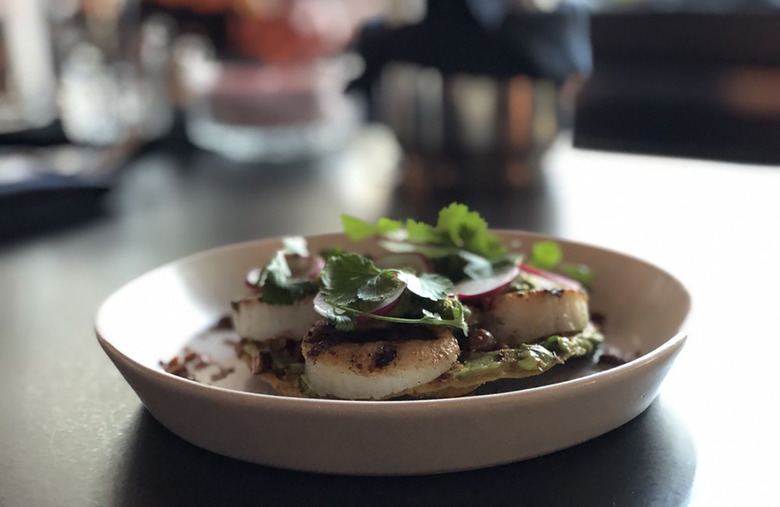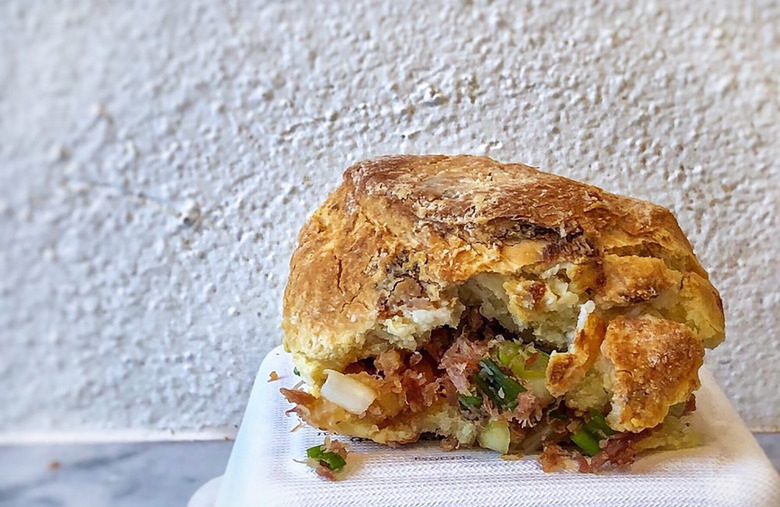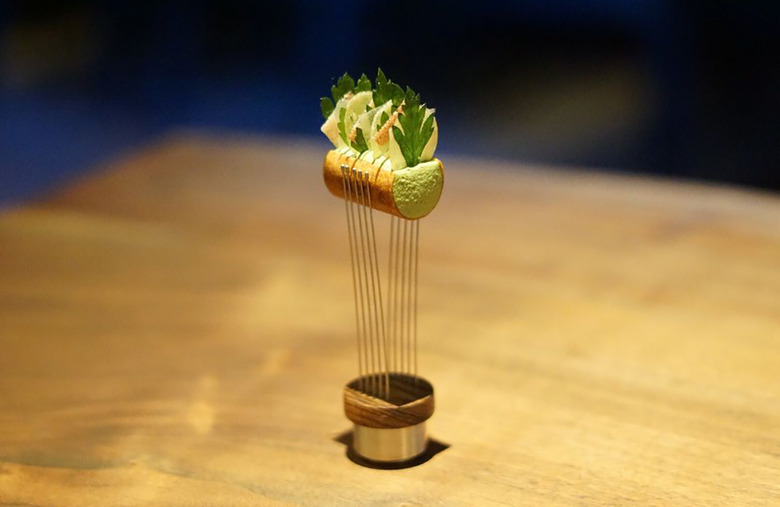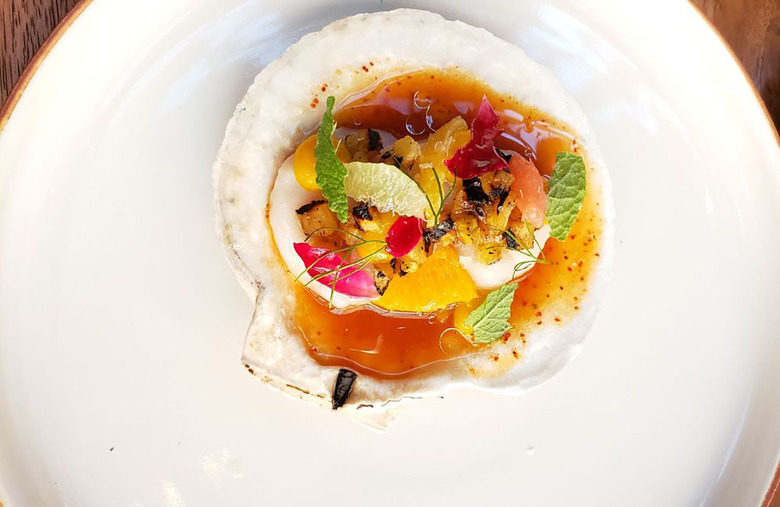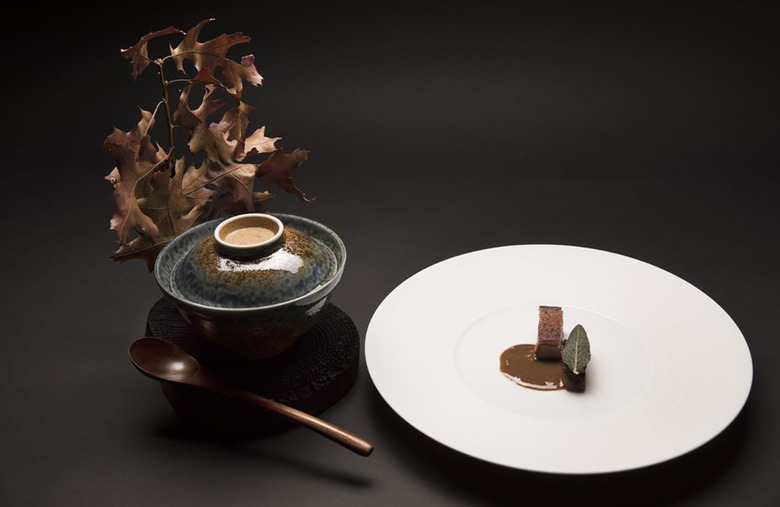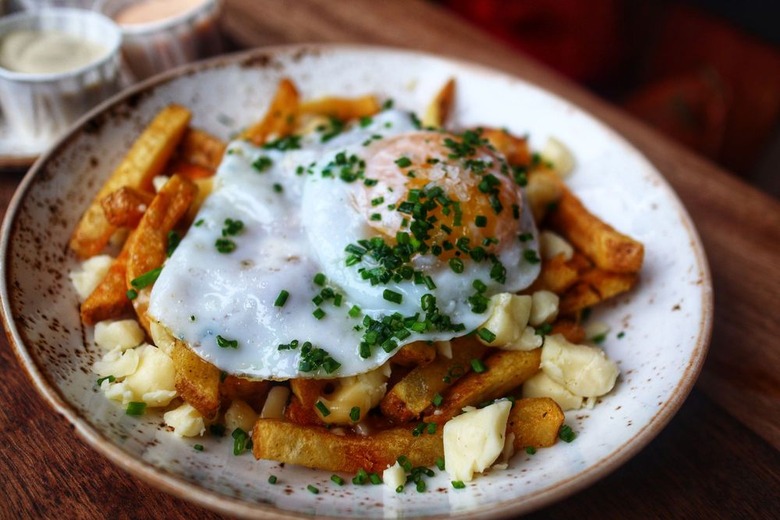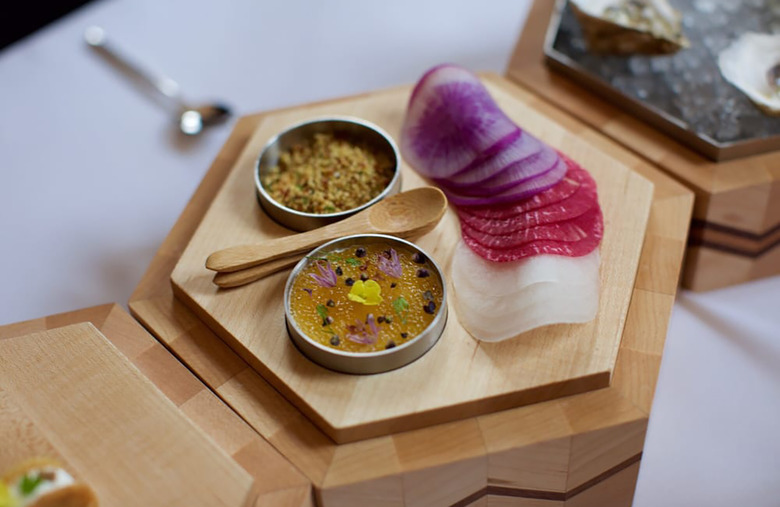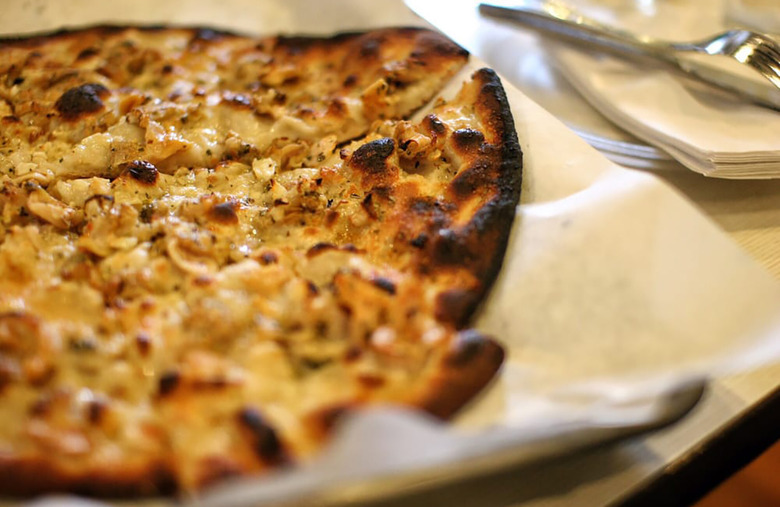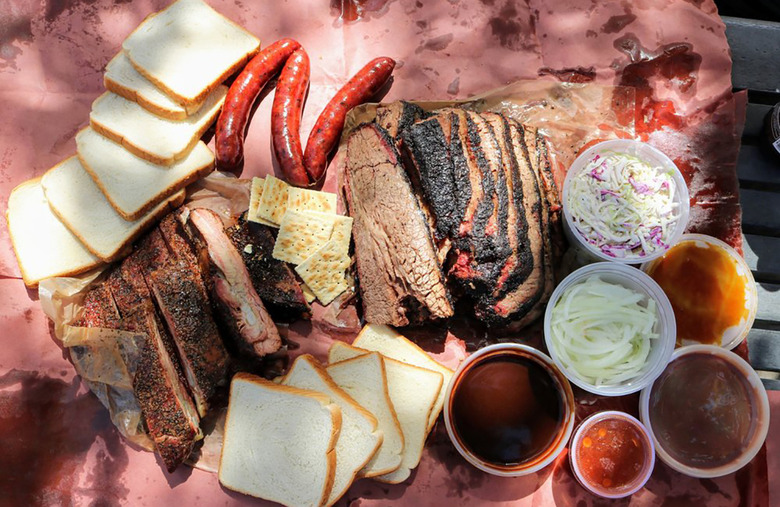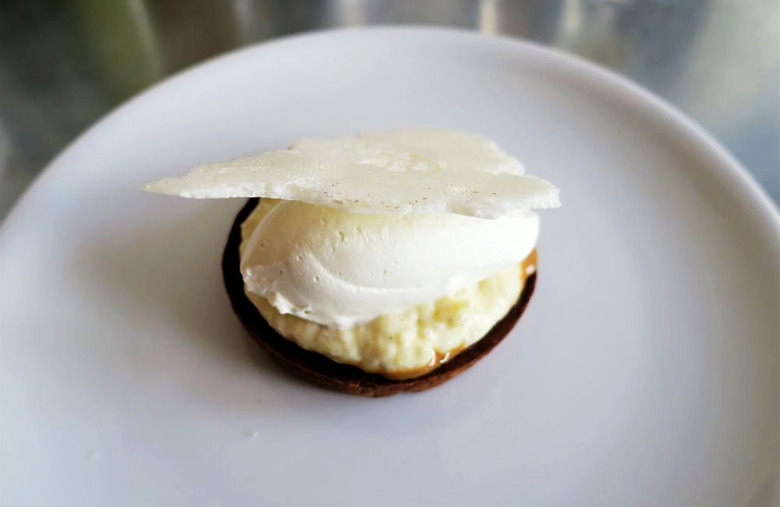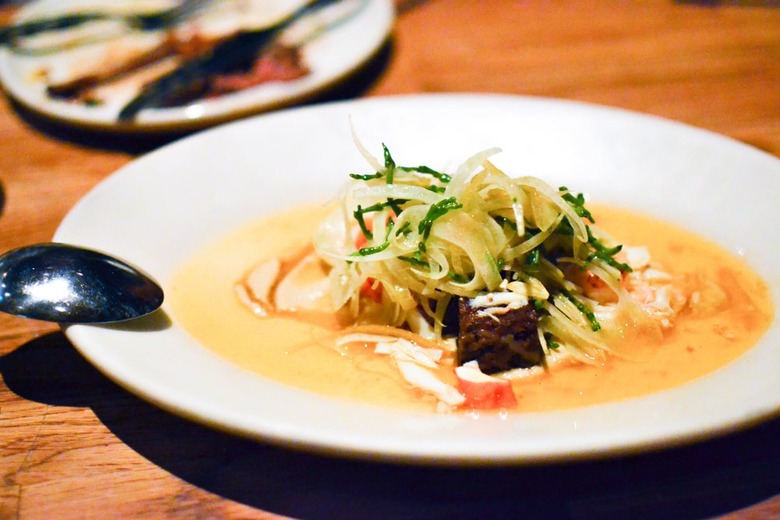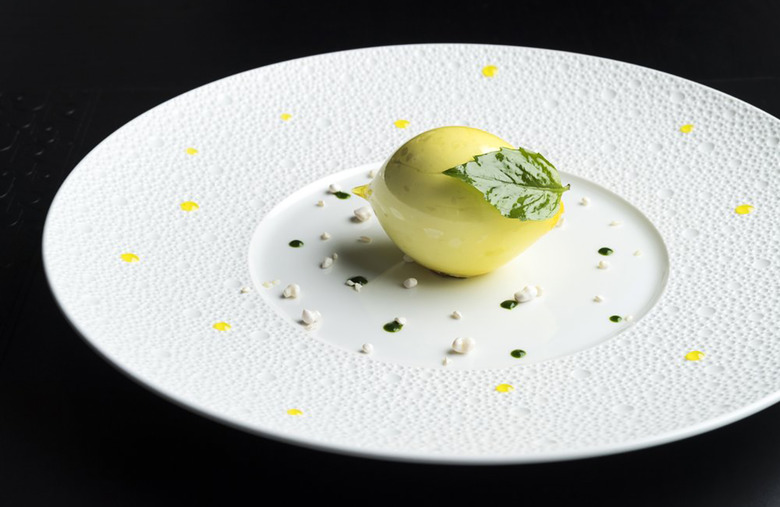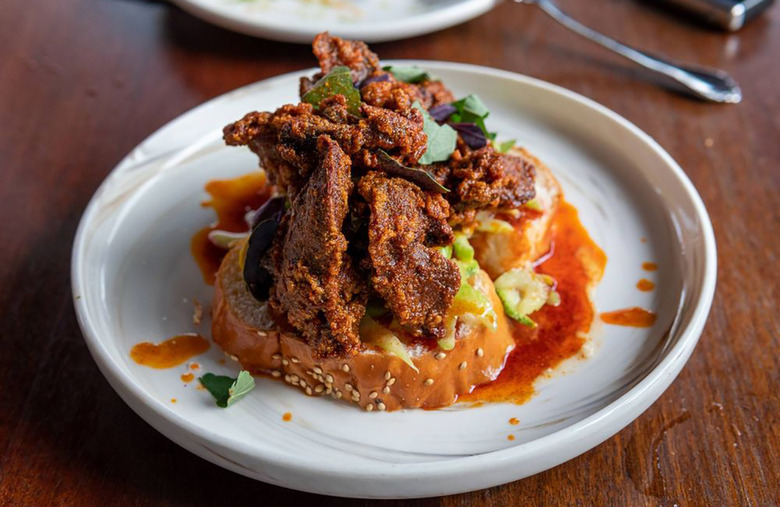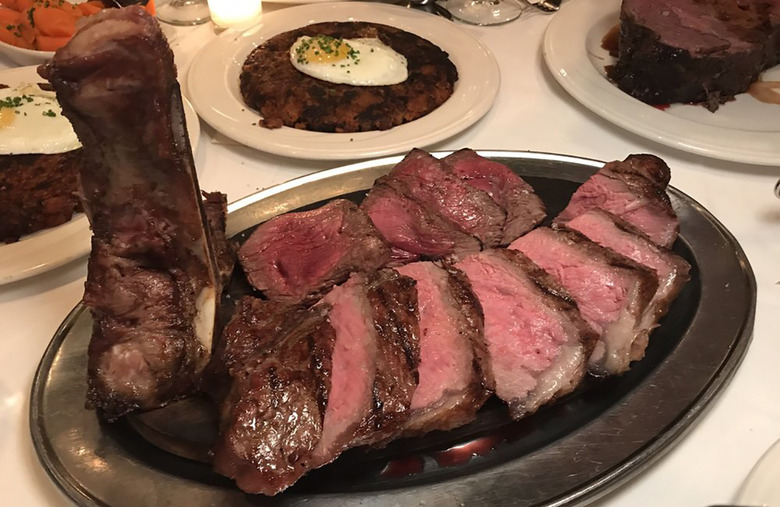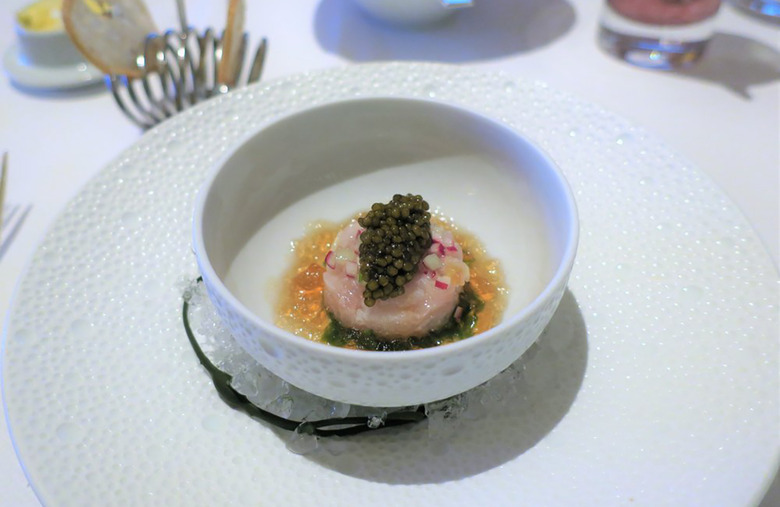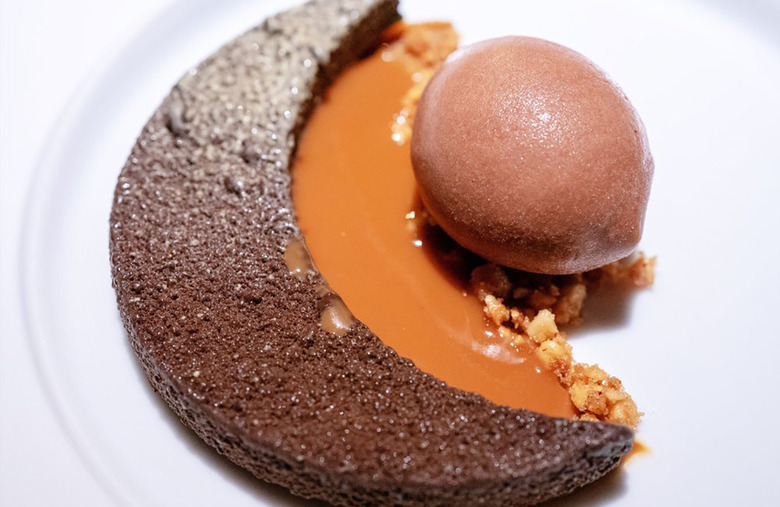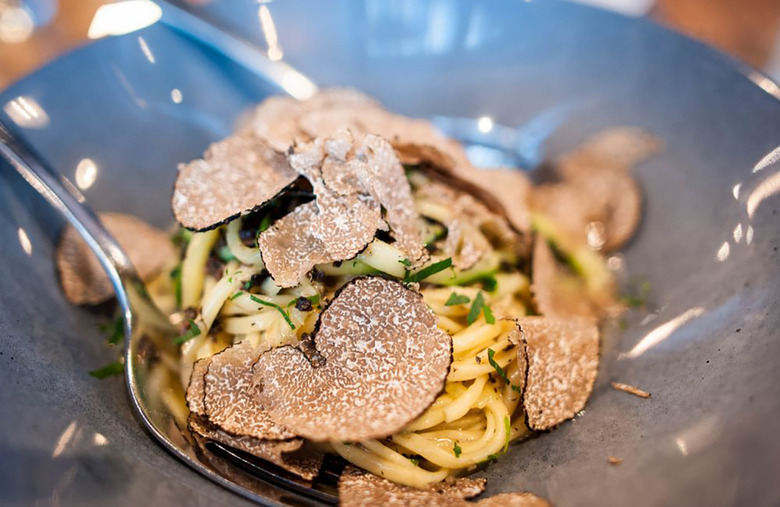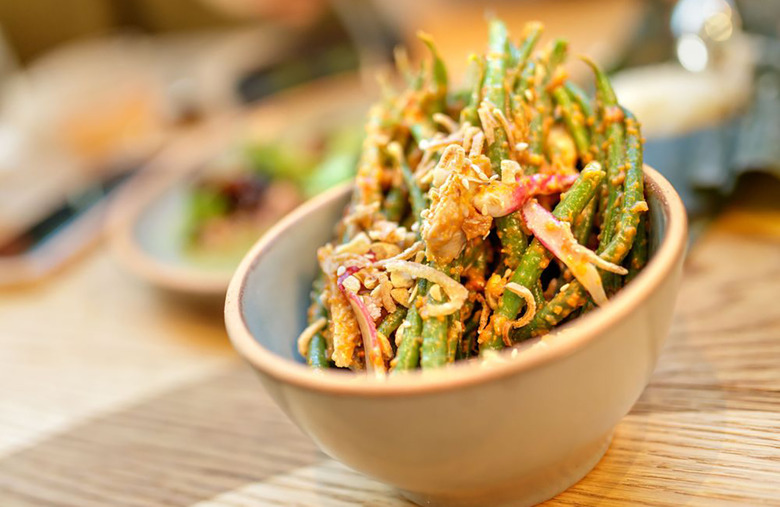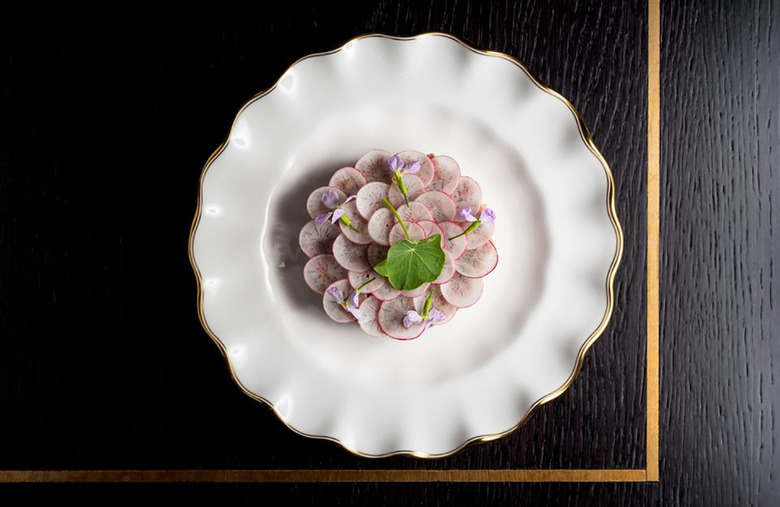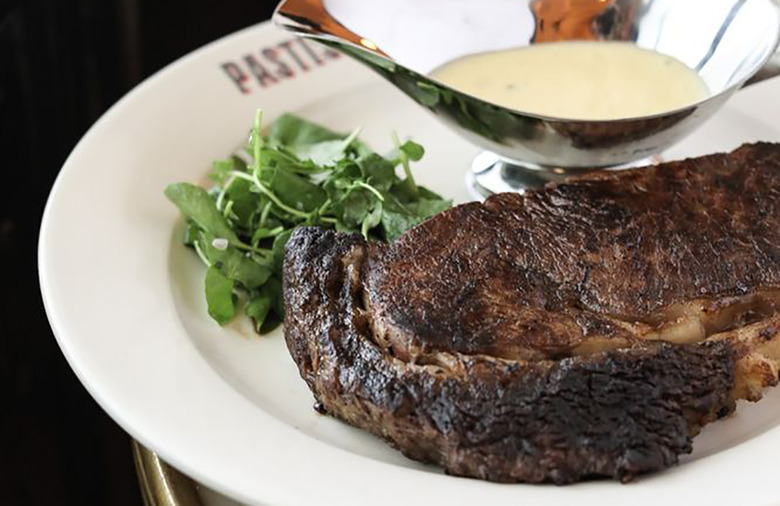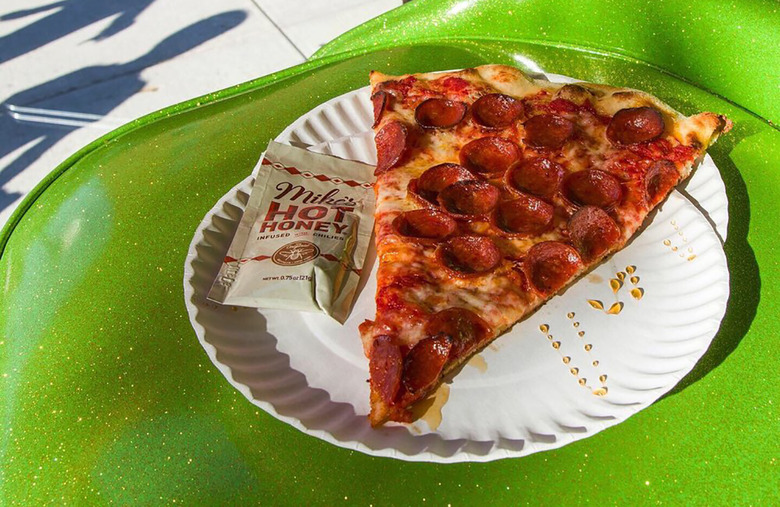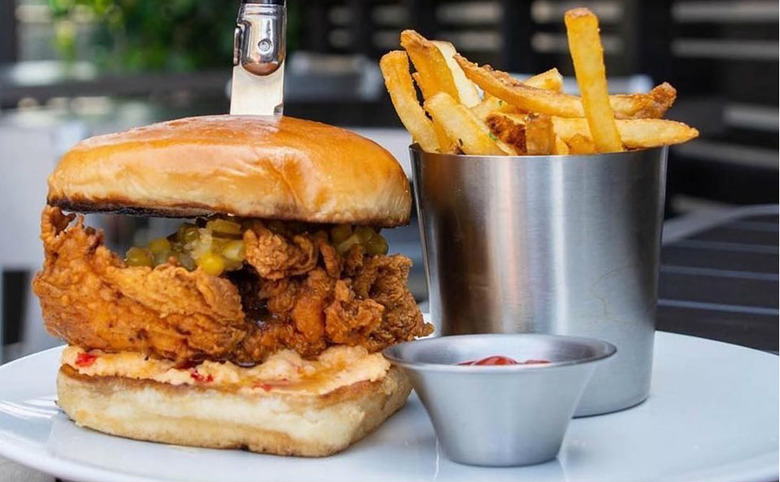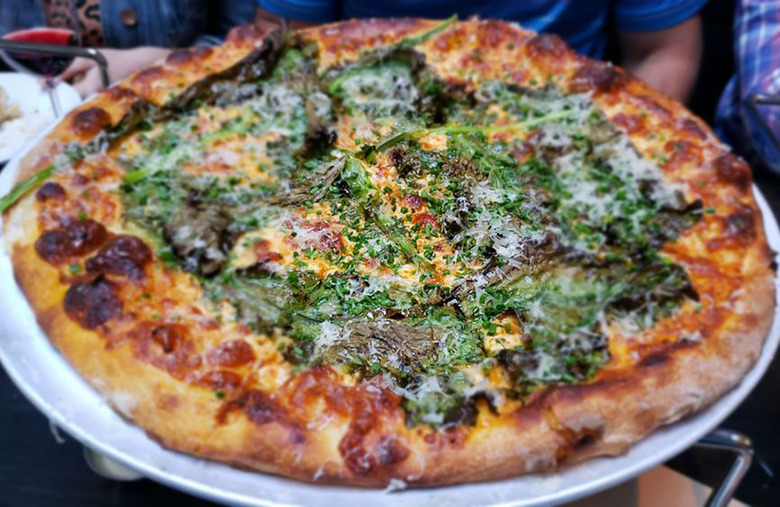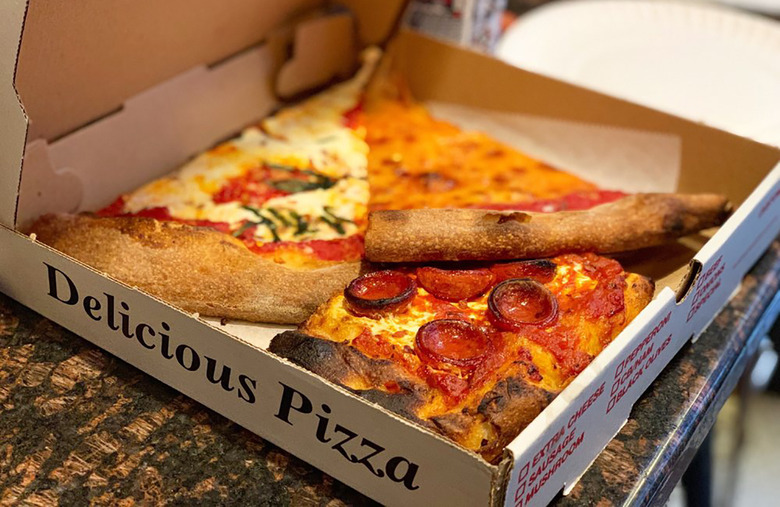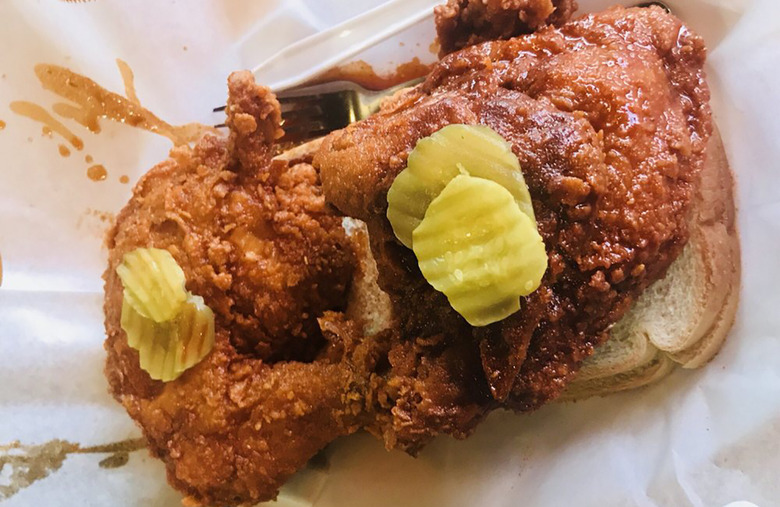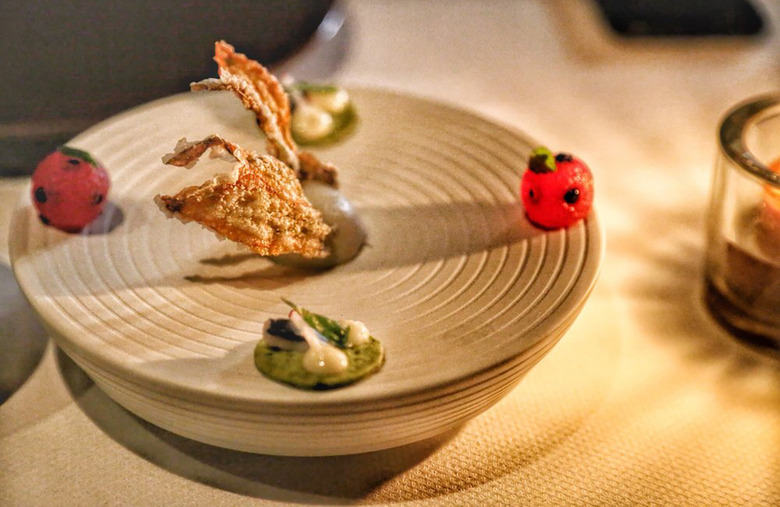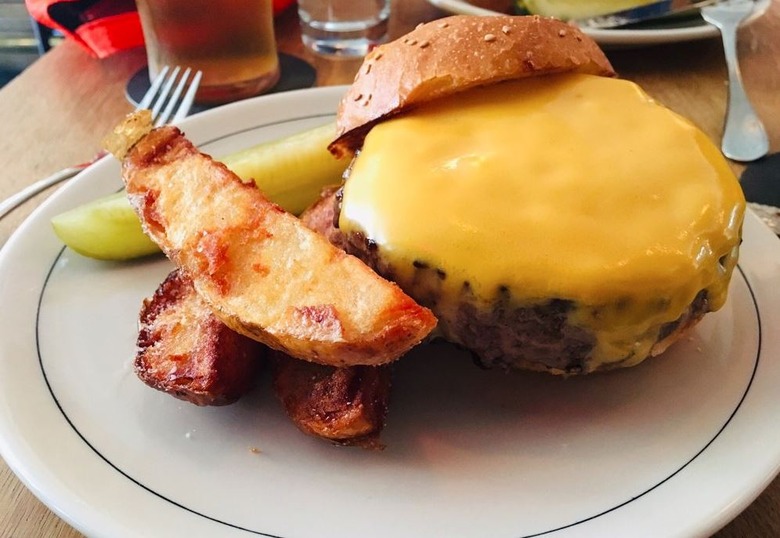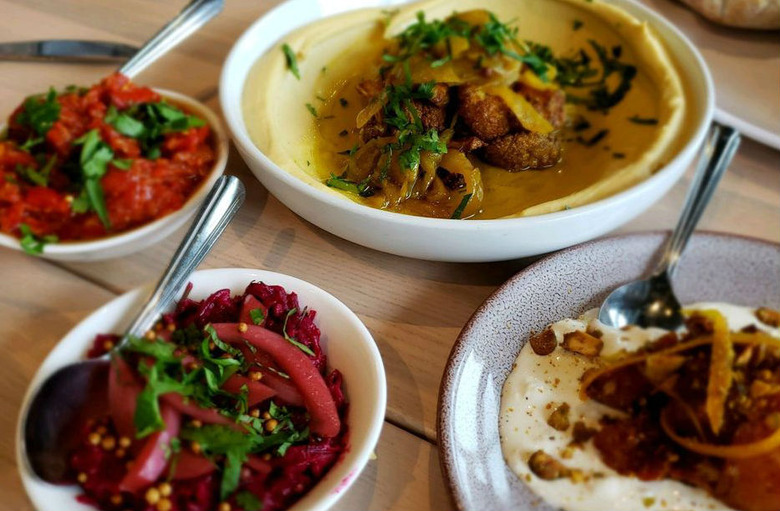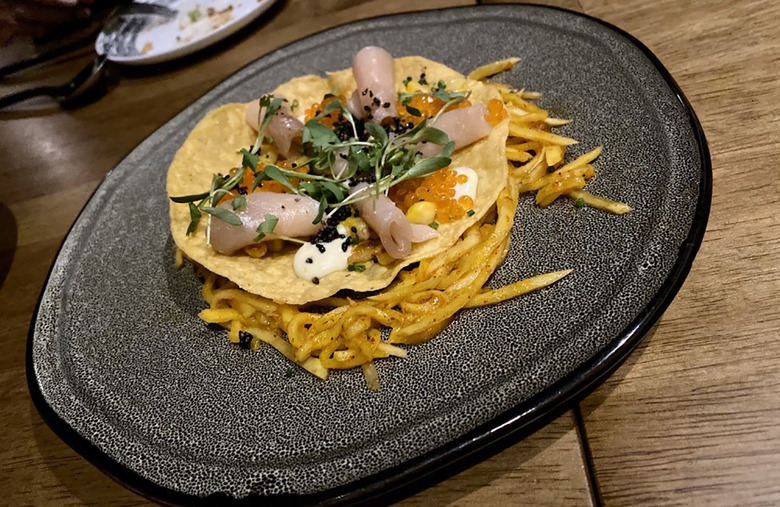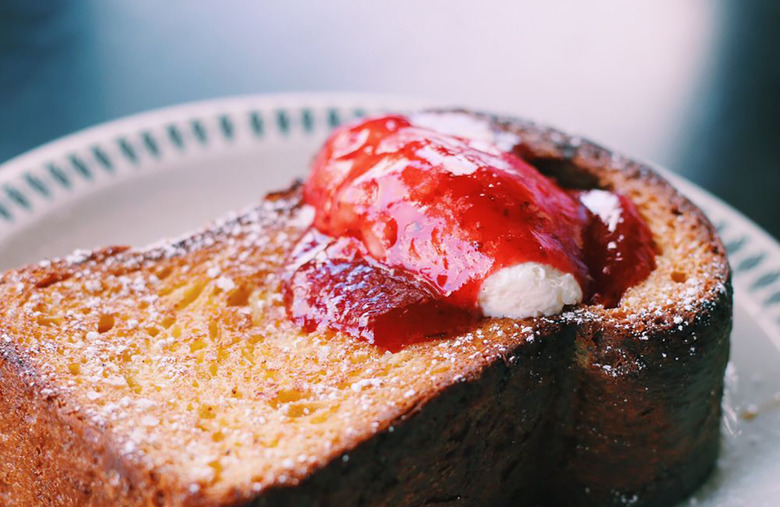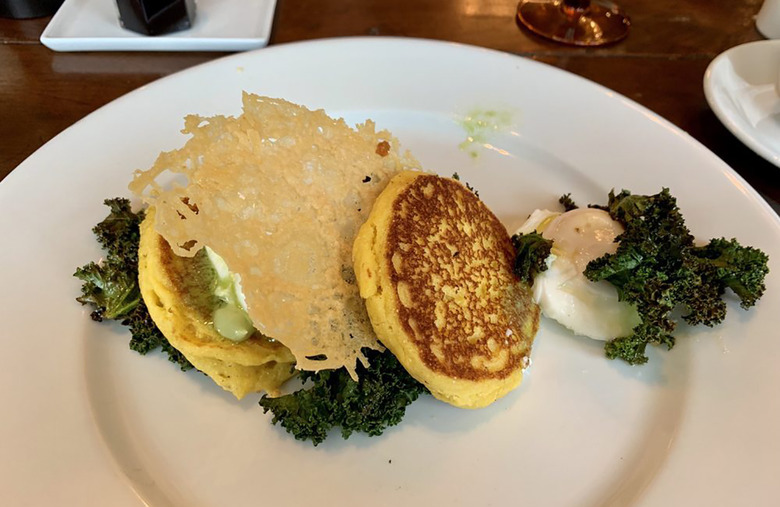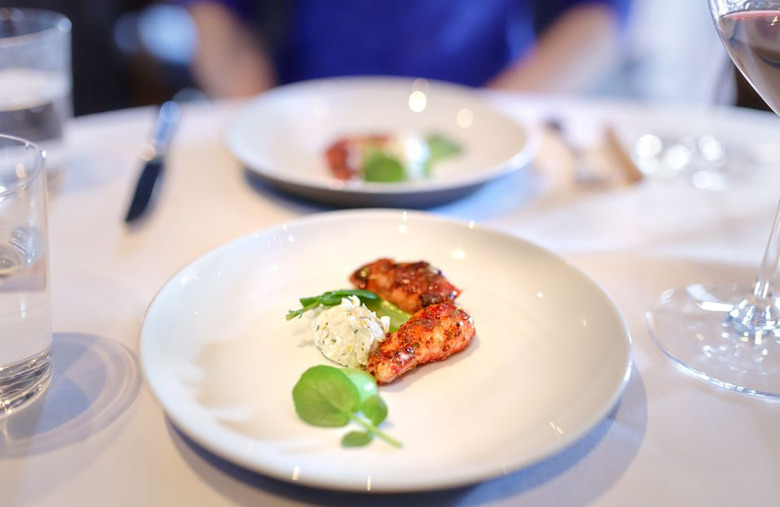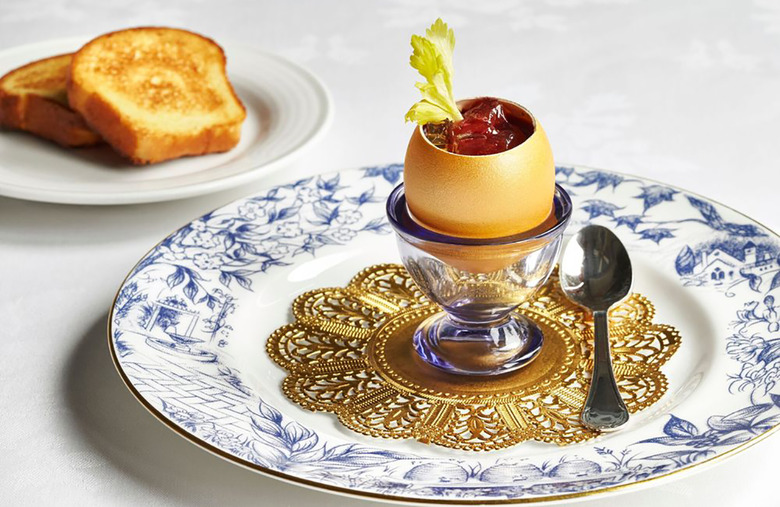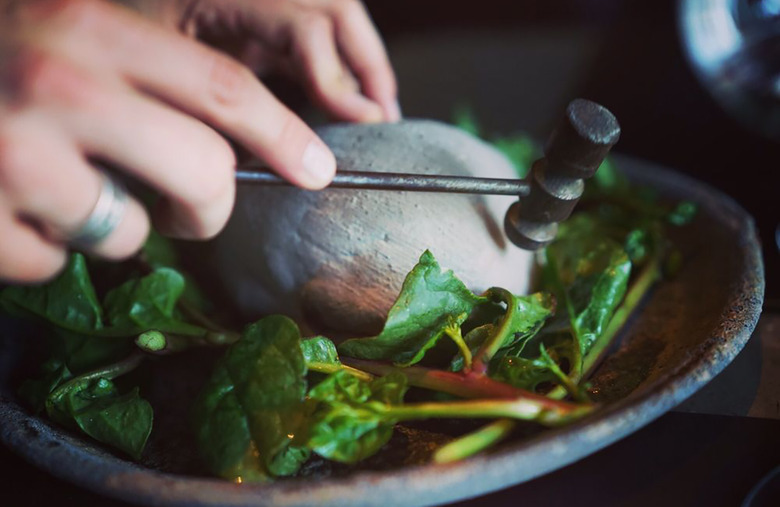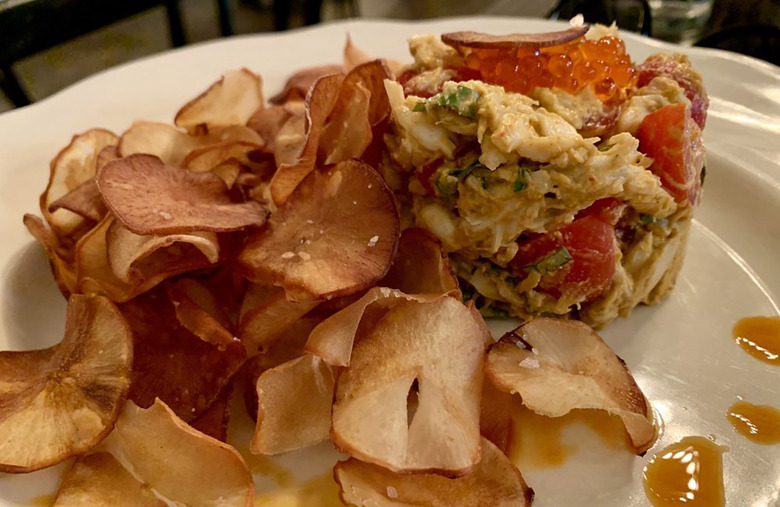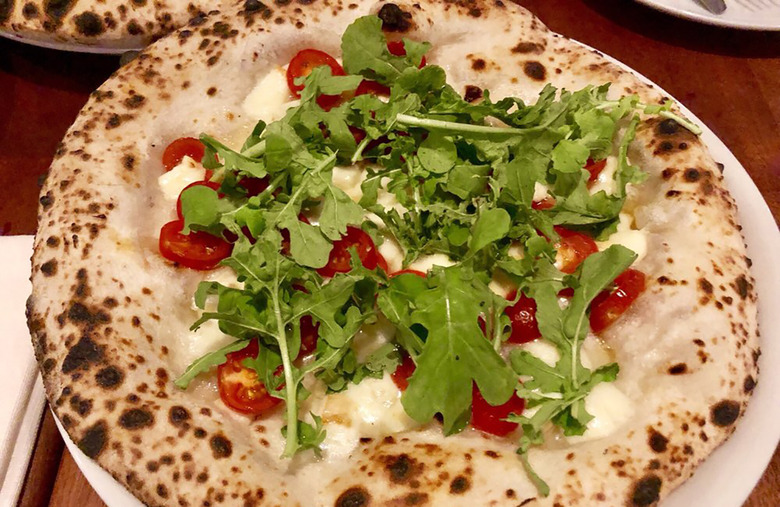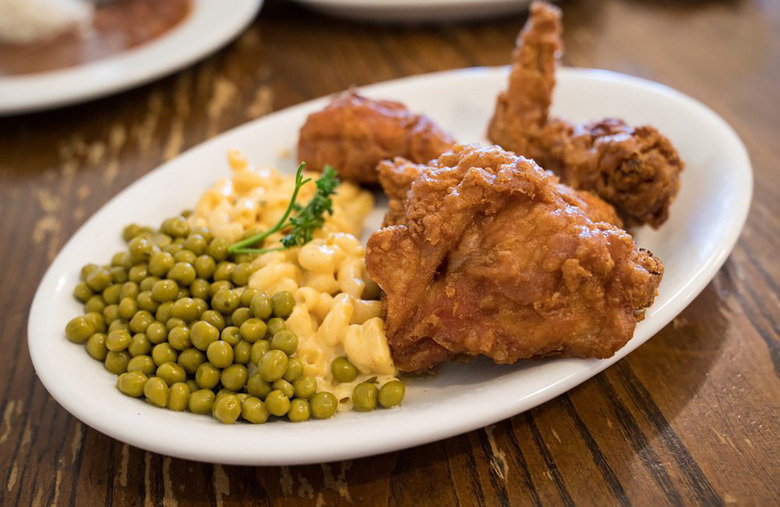The Best Restaurants Of 2019
In 2019, the most wildly creative restaurants to open in years took their respective cities by storm, beloved old-timers continued to rack up new legions of fans and health-conscious diners were provided with more options than ever before. Our list of the best restaurants of 2019 encompasses universally beloved fine dining restaurants, casual institutions where time stands still, perfect pizzerias both old and new, trendy must-visits, classic steakhouses as well as some of the very best restaurants to have opened this year. These are the very best restaurants of 2019.
Methodology
Throughout the year, The Daily Meal compiles comprehensive rankings of all of the above (not to mention burgers, tacos, fried chicken joints and more). We consulted all of our reporting over the past year in deciding 2019's top restaurants, but also took it one step further by scouring social media and lists of the best new restaurant openings of the past couple years to make sure that we left no dinner roll unturned.
In order to be considered one of the best restaurants of 2019, each eatery needed to check off a few boxes: Is the food consistently excellent across the board? If the menu changes regularly, does it do so to reflect what's local and seasonal, and without affecting the overall "voice" of the menu? Is it near-universally beloved in its home town and renowned around the country (or if it opened recently, does it show potential to do so)? And is the overall dining experience, from food to service to design to ambiance, one that you'll remember for years to come? All of these restaurants fit the bill.
Acadia (Chicago, Illinois)
Acadia is a two-Michelin-starred masterpiece under the auspices of chef/owner Ryan McCaskey and has been racking up legions of devotees since opening in 2011. Guests can choose from a couple different experiences, including sitting in the bar area and ordering one of the best burgers in America, pimento cheese, a lobster roll, oysters or 24-hour pork shoulder with truffle polenta — all of which are priced below $20. If you want something a little more upscale, take a seat in the elegant yet understated main dining room and be served a $185 tasting menu with dishes like chawanmushi with abalone, pine and dashi; smoked potato with quail egg, potato jus, white truffle and cottonbell cheese; and Elysian Fields lamb with beet, clam, caviar and dill.
Alewife (Richmond, Virginia)
The seafood-focused Alewife is inspired by the local catch of the Chesapeake Bay. Chef/owner Lee Gregory's menu changes based on what's fresh and seasonal, but expect dishes like flounder ceviche with pickled peppers, citrus and fish sauce; crispy crab claws with horseradish mayo and pickled celery; fried sugar toads (a type of pufferfish) and mackerel with delicata squash, farro and guanciale vinaigrette. There's a relaxed vibe and plenty of local beer on tap, and Gregory is bringing new, bold flavors to Richmond.
Alinea (Chicago, Illinois)
The menu at Alinea, one of the most expensive restaurants in America, can sometimes sound deceptively simple ("scallop, citrus aroma," "lobster, curry, Earl Grey, grapefruit," and the like), but what shows up on the plate is original and dazzlingly good. Chef/owner Grant Achatz consistently turns out some of the most imaginative and delicious contemporary (or modernist, if you will) cuisine in the country, and it's better than ever after closing down a few years ago for an extensive five-month renovation. At Alinea, you never quite know what you're going to be served, but a paradigm-shifting experience is all but guaranteed.
Angler (San Francisco, California)
When a chef as capable as Joshua Skenes gets his hands on some of the highest-quality ingredients on Earth and cooks them simply, some true gastronomic magic happens. Even though Angler has only been open since September 2018, it's already become a must-visit in San Francisco. Like at Skenes' groundbreaking restaurant Saison, the kitchen revolves around an open fire, but this restaurant is focused on seafood, and is more casual and less expensive than its predecessor (apps average less than $20, and entrees average in the $40s). The menu changes daily based on what the team of fishermen, hunters, gatherers, ranchers and farmers brings in, and the menu is exceedingly simple: antelope tartare, slowly grilled hen of the woods mushrooms, grilled diver scallops, whole pastured chicken roasted in the wood oven, whole petrale sole with smoked butter.
Atelier Crenn (San Francisco, California)
There are only 22 seats at Versailles-born Dominique Crenn's three-Michelin-starred flagship Atelier Crenn, where guests drop $335 on advance reservations in order to experience her acclaimed multi-course modernist tasting menu. In lieu of a menu, however, guests receive an original poem composed by Crenn; its lines loosely correspond to what diners can expect to receive (Crenn describes her cooking style as "poetic culinaria"). For instance, "Warriors ashore bathe in a glow as luminous as its gilded crown" is Dungeness crab with seaweed and whey; and "By the shimmer of black pearly, tumbling in the ashen cloud" is golden osetra caviar with potato and onion. This is some truly high-concept dining, yet it is not precious or pretentious. As of Oct. 1, the restaurant is meat free, focusing just on seafood and vegetables.
Atomix (New York, New York)
Ellia and Junghyun Park are giving modern Korean cuisine the chef's-counter treatment at this showstopper, where 10 courses are served at two nightly seatings for anywhere from $205 to $295 per person. Instead of presenting a menu to guests, each diner at Atomix receives a series of cards with essays about each dish. Diners can expect a parade of inspired flavors that seamlessly merge the old and new worlds: cucumber with kaluga caviar and smoked eel, steamed hake with smoked trout row and Korean rice wine, seabass pancake with potato dashi, smoked eggplant with abalone, gently fried quail, wagyu beef with buckwheat noodles. Reservations are extraordinarily difficult to come by, but if you manage to snag one, your perception of Korean food will be changed forever.
Bazaar Meat (Las Vegas, Nevada)
At Bazaar Meat, the ceaselessly energetic Jose Andrés has a menu that includes plenty of Spanish tastes, an extensive raw bar, plenty of fresh seafood and the option of pre-ordering an entire roast suckling pig, but there's no denying that this is a steakhouse at the end of the day. Look no further than a real-deal A5 Kobe rib-eye, a châteaubriand for two from California's Brandt Beef with pomme soufflé and périgord sauce, a 20-ounce grass-fed bone-in strip loin from Wisconsin's Strauss Farm and a true rarity: a rib-eye of "vaca vieja," an 8-year-old working Holstein from California.
Bern’s (Tampa, Florida)
Legendary Tampa destination Bern's has been going strong since 1956 and is all about wonderful excess. There are 20 kinds of caviar, two preparations of foie gras, four kinds of steak tartare (one with truffles), escargots, 15 different cheeses, more than 50 desserts (enjoyed after your meal in a separate "dessert lounge"), house-roasted coffee and a 500,000-bottle wine cellar. Oh, and did we mention steaks? There are six different cuts in a total of 51 different sizes (from 8 ounces of filet mignon to 60 ounces of strip sirloin, as well as 15 different sizes of châteaubriand), along with "luxe beef" options including a 100-day dry-aged Delmonico and dry-aged Japanese wagyu. Quite simply, Bern's is everything you look for in a steakhouse, and it claimed the No. 1 spot on our ranking of America's best steakhouses.
Birdie G’s (Santa Monica, California)
A love letter to chef Jeremy Fox's Midwestern roots and California produce, Birdie G's has a big, comforting menu filled with intriguing spins on big, bold comfort food. Cast iron cornbread, a rustic pork terrine, traditional Italian sausage ravioli, steak frites, a traditional relish tray and a whole section of the menu dedicated to Texas toast (try the "Sloppy Jeremy" with strawberry-kicked bolognese) seamlessly blend the old and new. There's also a decidedly Jewish slant, with artisan matzo, noodle kugel, matzo ball soup and a Hangtown fry/matro brei hybrid (called Hangtown brei, obviously); and a few fine-dining offerings "from California ranches and waters," like lamb with Persian spices, saffron yogurt and crispy dill rice. This menu is all over the place, but in the most fun and exciting way possible.
Black’s Barbecue (Lockhart, Texas)
Open since 1932, Black's is a local institution in the official "Barbecue Capital of Texas" and has three additional Texas locations. Nine different meats are offered, including brisket (the centerpiece of Texas' regional style), spare ribs, chicken, pork chops and giant beef ribs, and they're all smoked over post oak wood — the preferred wood of most Texas barbecue pitmasters. Whatever you do, don't visit without trying the sausage, handmade in house according to an 80-year-old family recipe.
Blue Hill at Stone Barns (Pocantico Hills, New York)
High-profile organo-loca-sustainavore Dan Barber has found the perfect home at Blue Hill at Stone Barns, a beautiful restaurant on the year-round farm and educational nonprofit Stone Barns Center for Food and Agriculture. This literal farm-to-table restaurant prepares multi-course meals (costing $278 per person) based largely on the day's harvest, served in a gorgeous and minimalist dining room with a vaulted ceiling, reclaimed wood floors, cream-colored walls, plenty of windows, well-spaced tables, hanging plants and (of course) white tablecloths. The serene and upscale dining room, the high-end cuisine and the pastoral setting combine to create one of the most romantic dining experiences in America.
Bread and Salt (Jersey City, New Jersey)
Rick Easton is one of the country's most meticulous and renowned bakers, and he first gained recognition back in 2015 for a stone-milled, high-extraction wheat flour "local bread" sold at his shop in Pittsburgh. So it goes without saying that the pizza dough he's turning out at the Jersey City location of Bread and Salt is going to be equally fussed-over. The end result? Roman-style pizza al taglio sliced to order, with a crisp, airy and chewy crust topped with a changing selection of fresh ingredients from New York's Union Square Greenmarket. The Rossa (simply topped with tomato sauce) and the Margherita (with high-end mozzarella) are always available, though, and are easily among the very best pizzas in America.
Bullard (Portland, Oregon)
A no-holds-barred celebration of all things meat, Bullard is chef Doug Adams' homage to his native Texas. There's a Cobb salad with smoked tri-tip, a dry-aged burger, braised elk shoulder, smoked pork belly for two, a slow-smoked beef rib with green sauce and fresh flour tortillas and half or whole smoked chicken. But produce doesn't get short shrift — it's all impeccably sourced from local farmers and there's a real effort to fuse both Portland and Texas into a cohesive whole, which is best exemplified by the restaurant's logo: a flag that's a cross between the state flags of Texas and Oregon.
Callie’s Hot Little Biscuit (Charleston, South Carolina)
Founded in 2005 by Carrie Morey and already a beloved Charleston institution, the quaint and narrow Callie's Hot Little Biscuit is serving biscuits filled with your choice of jam, country ham, pimento cheese (a Southern food the rest of the world needs to try), bacon or other substantial offerings like sausage, egg and cheese. You can even buy jams, flavored butters and gravy a la carte, as well as biscuits by the dozen and boxed lunches containing biscuits, jam, cookies and coffee. It's a small counter-serve establishment, though, so get there early and be prepared to wait. But don't worry, this place is easily one of those restaurants worth waiting in line for.
Coi (San Francisco, California)
At chef Daniel Patterson's Coi, the $250 11-course seafood-heavy tasting menu changes daily, but expect dishes like fluke cured in kombu with muscade squash, new potato and celtuce with comte and tarragon, poached and grilled lamb with chard and garum, and frozen lime marshmallow with coal-toasted meringue. Patterson recently returned to the helm after a three-year hiatus (he opened the restaurant in 2006 and ran it until 2016), so now's a great time to experience it.
Comedor (Austin, Texas)
A modern, industrial dining room is home to one of the most exciting new restaurants in Texas, Austin's Comedor. Two fine-dining chefs decided to turn their attention to modern Mexican cuisine, combining cutting-edge culinary techniques and flavors with ones that have been used in Mexico for hundreds of years, with stunning results. Dishes include huauzontle fritters with quesillo and habanero ash emulsion, scallop crudo with tepache broth and pasilla mixe, bone marrow tacos with quelites and smoked butter, cochinita pibil with pork belly memela, and Spanish octopus with black garlic mole and quinoa. This is what it means to look forward and backward at the same time — although you may want to keep Google handy while browsing the menu in order to research some of these lesser-seen ingredients.
Dialogue (Santa Monica, California)
Chef Dave Beran spent years as one of legendary Chicago chef Grant Achatz's right-hand men — first at Alinea, then as executive chef of Next (winning a James Beard Award for his efforts). So it came as no surprise that when he decided to strike out on his own, he dreamt big and bold. Dialogue is an 18-seat restaurant and tasting counter (three tables and eight seats at the counter) from which Beran and his team serve a seasonally inspired, Japanese kaiseki-influenced, multi-course tasting menu. Like at many high-end tasting counters, the market-driven menu changes on a near-daily basis depending on what's fresh and in season, but Beran's objective is to tell a story through food. So expect dishes like "a salad of mints with lilac," "three years of peaches," "uni, chipotle morita, fermented tomato" and "steak 'au poivre,' salanova lettuce, yeast."
Duckfat (Portland, Maine)
Portland, Maine, has about as many restaurants as a city of its size can manage, but the small, low-key Duckfat stands out from the pack. Essentially a fry and sandwich shop, Duckfat has managed to capture lightning in a bottle thanks to the ingenuity of its owners, Nancy Pugh and Rob Evans, who opened its doors in 2005 and picked up a James Beard Award for their efforts in 2009. So what's all the fuss about? Well, you can start with the fries, which are made from hand-cut Maine potatoes, fried in (what else?) duck fat and served Belgian-style in a cone with a variety of dipping sauces (they're easily among the very best French fries you'll find anywhere). When topped with local cheese curds, duck gravy, duck confit and a sunny-side-up egg, they reach levels of deliciousness heretofore unknown to man. But if you can tear yourself away from the poutine, then the homemade soups, sandwiches loaded with house-smoked brisket or turkey, homemade meatloaf, slow-roasted pulled pork and citrus-scented doughnut holes (one guess what they're fried in) will have you literally dreaming about your next visit.
Eleven Madison Park (New York, New York)
Although Eleven Madison Park opened to much fanfare and subsequent acclaim in 1998, it was Danny Meyer's hiring of Swiss-born Daniel Humm to helm the kitchen in 2006 that elevated the place to the level of the finest restaurants in the country. The chef is still firmly in control, and while he will tailor his single $335 multi-course tasting menu to accommodate allergies, dietary restrictions and ingredient preferences, there is no a la carte selection available. The particulars of the dishes change frequently, but the technique is contemporary French and modernist. The ingredients are heavily New York-based, and the culinary traditions on which the food is based are often those of Gotham street or deli food, producing notably unique results (a roasted dry-aged duck, scented with lavender and honey, is a standby). A recent renovation gently modernized the dining room (and completely overhauled the kitchen), and reservations are just as difficult to get as always. If you can snag one, however, and can spare the expense, this is easily one of the best restaurants in America for a special-occasion meal.
Frank Pepe Pizzeria Napoletana (New Haven, Connecticut)
Frank Pepe Pizzeria Napoletana is a bucket-list destination you'll have to make a pilgrimage to if you want to discuss the topic of America's best pizzas with any authority. The New Haven icon opened in Wooster Square in 1925 and shortly thereafter moved into its current space, at the time making it the largest pizzeria in America. The pizzas here are quintessential New Haven: oblong, just a little charred, thin-crusted, chewy, coal-fired and irresistibly delicious. There are 11 locations in the region, and at each one, the original coal oven has been faithfully replicated, brick-by-brick. If you visit, make sure to try the clam pie. Freshly shucked, briny littleneck clams, an intense dose of garlic, olive oil, oregano and grated Parmigiano-Reggiano sit atop a charcoal-colored crust, resulting in a Northeastern pizza masterpiece.
Franklin Barbecue (Austin, Texas)
Pitmaster Aaron Franklin and his wife Stacey started selling barbecue from an Airstream trailer in 2009, and today they're running one of the most highly praised restaurants in America, serving barbecue that's widely regarded as the very best you'll find anywhere. How did they get there? For one, attention to detail. The quality of the meat, the care and attention put into the seasoning, the wood, the smoking process and the carving — Franklin literally has it down to a science, and the crowds show up in droves every day to sample the fruits of his labor. Salt and pepper, meat, smoke and time are all that go into the brisket, ribs, pulled pork and turkey, and the end result is, well, perfect. Visiting Franklin Barbecue is a pilgrimage that all barbecue lovers should make, but it requires some planning: Folks show up as early as 8 a.m. to claim a place in line, the doors open at 11, and they close up shop as soon as the meat runs out, usually around 3. It's a bit of a tourist trap, but a tourist trap restaurant worth visiting.
Frenchette (New York, New York)
Chefs Lee Hanson and Riad Nasr rose to prominence at the helm of beloved Keith McNally restaurants including Balthazar, Pastis and Minetta Tavern, and their take on a French bistro, Frenchette, opened in 2018 and was met with near-universal acclaim. The warm and inviting space takes traditional French bistro fare and turns it on its head, resulting in dishes like veal tongue and mackerel tonnato, duck frites and rotisserie lobster with curry beurre fondue. Even the classics — roast chicken for two, veal kidneys with mustard sauce, oeuf en meurette with cockscombs and bordelaise — are prepared with such a deft hand that you remember why they became classics in the first place.
Girl & the Goat (Chicago, Illinois)
Stephanie Izard's perpetually packed West Loop restaurant Girl & the Goat is a constant party, where bold, endlessly creative, globally inspired family-style dishes comfortably walk the tightrope between envelope-pushing and comfort food. The sense of community and comfort are readily apparent, from the soundtrack of pop and rock hits playing in the background to the broad, communal bar table. Dishes like roasted beets with green beans, white anchovies, avocado creme fraiche and breadcrumbs; grilled octopus and pork belly with spiced black bean; crisp braised pork shank with buttermilk dressing, apple kimchi and naan; and goat empanadas with miso-bleu aioli are just part of the reason why "Top Chef" season four winner Izard won the James Beard Foundation's Best Chef: Great Lakes accolades in 2013.
Howlin’ Ray’s (Los Angeles, California)
Howlin' Ray's owner Johnny Ray Zone has spent time working for some of the world's most renowned chefs, but he found his true calling on a trip to Nashville. What started as a food truck is now a tiny storefront located inside a Chinatown shopping mall serving fresh-from-the-fryer hot chicken made screamingly hot with help from cayenne and extracts of habanero, ghost pepper and red Savina (brown sugar, molasses and Cajun spices round out the seasoning). Be prepared to wait up to two hours to sample it, though.
Joël Robuchon (Las Vegas, Nevada)
The cooking is simply exquisite in this opulently furnished dining room in the MGM Grand Hotel & Casino in Las Vegas. As the first restaurant opened in America by the famed, award-winning Robuchon, who passed away in 2018, Joël Robuchon maintains the highest standards under the guidance of chef Christophe de Lellis. Everything is impeccable, from its superb service and impressive wine list to such finely crafted dishes as Le Caviar Imperial, a disc of king crab topped with an ample amount of osetra caviar, atop a crustacean gelee dotted with cauliflower puree. The 18-course tasting menu is a truly memorable experience. Not only is the food incredible, but you'll remember the damage it did to your bank account. At $445 a head, Joel Robuchon ranks among the most expensive restaurants on Earth.
JuneBaby (Seattle, Washington)
Chef Edouardo Jordan is a veteran of Per Se and The French Laundry. He opened his first restaurant, Salare, in Seattle in 2015 and followed that up in 2017 with JuneBaby, a celebration of Southern food. The menu here looks like those of plenty of other Southern restaurants: buttermilk biscuits, boiled peanuts, pimento cheese, oxtails, catfish with greens, green gumbo with Gulf shrimp and fried chicken on Sundays. But this restaurant is so much more than that. These Southern dishes are executed perfectly, with the precision and technique of a fine-dining chef, but they're also telling a story. With the opening of JuneBaby, Jordan cemented himself as one of the country's great chefs; so good, in fact, that he snagged two James Beard Awards in 2018: Best New Restaurant for JuneBaby and Best Chef: Northwest for Salare.
Keens (New York, New York)
Perfectly charred steaks and chops have been served at New York institution Keens since 1885. Before you're served your expertly cooked, dry-aged sirloin, filet mignon, prime rib, porterhouse for two or porterhouse for three, have a look around. This labyrinthine shrine to old New York is spread over two floors and three townhouses and features memorabilia from more than 100 years of New York history, including playbills, political cartoons and photographs, as well as a collection of more than 50,000 pipes from the era when regulars like Babe Ruth and Teddy Roosevelt would store theirs there. If you go once, try the porterhouse or the spectacular prime rib. If you go twice, try the famous mutton chop, a 26-ounce lamb saddle that's nearly two inches thick and dates back to the restaurant's earliest days.
Le Bernardin (New York, New York)
This elegant seafood restaurant, headed by chef Eric Ripert, has maintained four stars from the New York Times since shortly after opening in 1986. Ripert is an artist working with impeccable raw materials. Eat in Le Bernardin's modern dining room against a backdrop of painted waves and enjoy dishes like warm langoustine with seaweed-Matsutake salad and dashi broth; sauteed Dover sole with almonds, chanterelles and soy-lime emulsion; and glazed Maine lobster with leek cannelloni and red wine-rosemary sauce.
Manresa (Los Gatos, California)
Since opening his Michelin three-starred Los Gatos restaurant Manresa in the foothills of the Santa Cruz Mountains in 2002, chef David Kinch has defied conventional culinary categorization. The best way to describe him and his cuisine is to use one word: original. His $295 tasting menu changes nightly and is sourced primarily from local farms, and each dish features vast landscapes of ingredients and flavors that are thoughtful and experimental, but never overwrought.
Monteverde (Chicago, Illinois)
Chef Sarah Grueneberg honed her chops as executive chef at one of the best Italian restaurants in America, Spiaggia, before opening Monteverde in Chicago's West Loop in 2015, and two years later she was awarded with a James Beard Award for Best Chef: Great Lakes. A visit to the restaurant (if you can snag a reservation) will easily explain why she's earned such an honor. The atmosphere is upbeat and lively, and many of the pastas are made in-house in full view of diners. Seemingly simple pasta dishes like strozzapreti al pomodoro and ravioli di robiola are elevated to new heights with the use of ingredients like juniper smoked ricotta and Umbrian truffle sauce, and non-pasta dishes like skate schnitzel and roasted sea scallops with butternut squash are worthy of acclaim in their own right.
Nari (San Francisco, California)
This lush, modern and inviting Thai restaurant from the team behind the Michelin-starred Kin Khao opened in August and is already being hailed as San Francisco's most exciting new restaurant. Chef Pim Techamuanvivit named the restaurant Nari, which is Thai for "women," as a subtle tribute to Thai female cooks, and as another nod, each creative cocktail is named after a Thai literary heroine. As for the food, it's big, bold and unapologetic. Fried bites of Northern Thai headcheese, fried sweetbreads glazed in sriraja-tamarind sauce, spicy squid and pork jowl and mixed seafood curry roasted in a banana leaf are standout starters. As for mains, try the gaeng ranjan (funky, spicy beef soup with sweet peppers and shrimp pasta), massaman gae (lamb shank curry with grilled onions and nectarines) and gaeng rawaeng (whole cornish game hen with turmeric and lemongrass, served with roti). This is occasionally challenging, occasionally very spicy stuff, but if you just dive in, you'll be rewarded.
Next (Chicago, Illinois)
Even though it's been open only since 2011, chef Grant Achatz's groundbreaking restaurant Next seems as if it has always been part of the culinary avant-garde — ironic for a restaurant with a prix fixe concept that changes every four months. There's nothing blasé about Next. You never know what's going to be placed before you — it could be anything from chicken liquid croquettes (elBulli menu) to the world's best mac and cheese (Childhood menu). Well, technically, it will be neither, given that those dishes are from past menus and the menus here don't repeat. But you get the idea. Past themes have included "The Hunt," "Bocuse d'Or," "Tapas," "French Laundry," "Bistro," "Childhood," "Paris 1906"... it goes on, and whatever genre (or other restaurant's menu) they set their sights on isn't just faithfully replicated, it's actually improved upon. Whatever it is, Next's food is inventive and exciting without being gimmicky; likewise, the service is flawless without being fawning.
Pasjoli (Santa Monica, California)
Chef Dave Beran went the French route for his follow-up to Dialogue, with simply astonishing results. It opened in September after much anticipation, and already it's one of the hottest spots in town. At Pasjoli, Beran is turning Southern Californian ingredients into classic French cuisine inspired by Parisian markets, and the menu is chock full of high-end traditional French fare, including scallop quenelle with caviar beurre blanc, milk-fed pork with de puy lentils and roasted cippolini onion, turbot meunière and an omelette with fines herbes, black truffle and gruyere. The star of the menu, a whole roast duck a la presse for two, costs $165 and is only available by pre-order.
Pastis (New York, New York)
Restaurateur Keith McNally's Pastis was a Meatpacking District celebrity magnet during its initial run from 1999 to 2014 with perfectly executed bistro fare and a "see and be seen" vibe. Its opening ushered in the super-chic "MePa" we know today, and its closing signaled the end of an era, so it was met with much enthusiasm (and a little bit of apprehension) when it was announced that McNally, along with renowned restaurateur Stephen Starr, would be bringing it back to life. And when it reopened in June, the former regulars breathed a sigh of relief. Not only is the space itself bigger and just as attractive as it was before, the classic bistro fare (moules frites, steak frites, salade Niçoise, onion soup, duck a l'orange, half roast chicken) is spot-on and much of the original energy and atmosphere has been reclaimed.
Paulie Gee's Slice Shop (Brooklyn, New York)
Old-school pizza slices are having a moment in New York City, and no place best exemplifies the trend more than Paulie Gee's Slice Shop, a spinoff of the venerable Paulie Gee's. Pizza master Paul Giannone isn't reinventing the wheel here — he's just using quality ingredients and a whole lot of skill to turn out pizza slices that taste exactly how you want them to, the perfect fusion of crust, sauce and cheese. Making a perfect slice of traditional New York pizza is a lot harder than it looks, but Slice Shop is pulling it off.
Petit & Keet (Little Rock, Arkansas)
Industry veterans Louis Petit and Jim Keet teamed up in 2017 to open Petit & Keet.This sprawling eatery is the rare restaurant that really is all things to all people, and the menu has just enough of a Southern twang to remind you that this is Arkansas, after all. This is a choose-your-own-adventure kind of place. You can share a bunch of small plates like cheese and charcuterie, beer-steamed chorizo mussels or house-smoked yellowfin tuna dip. Also feel free to keep it casual and dig into a burger (made with house-ground filet and strip and topped with bacon, cheddar and pickled green tomato) or a fried chicken and pimento cheese sandwich. If you want to go a more traditional route, start with a pumpernickel Caesar salad or bowl of duck gumbo and follow up with paneed chicken, a 12-ounce Berkshire pork chop, a timbale with vegetables and popped Arkansas purple rice, tempura fried duck tamales or seared Gulf redfish. Every town needs a restaurant just like Petit & Keet.
Pizzeria Beddia (Philadelphia, Pennsylvania)
When Pizzeria Beddia first opened in 2013, it was a two-man operation — just Joe Beddia and his friend John Walker serving 40 pies a night, four nights a week, in a cash-only, no-phone, no-bathroom space. After being named America's Best Pizza by Bon Appetit in 2015, crowds began lining up hours in advance for a chance to snag one of the four available styles of pizza. But sadly, Joe finally tired out and closed up shop in 2018. The second coming of Beddia opened in Fishtown about a year later. This is a far more standard operation, with a full staff, a horseshoe-shaped bar, wine, kombucha on tap and a selection of small plates. Two things remain unchanged, however: the crowds and the pizza. There are still just four pizzas on the menu, and Joe is still using super high-quality ingredients and organic flour to turn out crisp, savory pies with uncooked sauce lending a bright zing.
Prince St. Pizza (New York, New York)
Prince Street Pizza started serving "SoHo Squares" in 2012, and since then, it's gone down as one of New York's finest pizzerias. Owner Frank Morano, who uses his family's Sicilian recipes, installed a new gas-fired, brick-lined Marsal & Sons oven to fire up both Neapolitan pies and square slices. Start with the simple mozzarella and sauce signature square, but don't leave without trying the Spicy Spring. It's topped with tangy-sweet fra diavolo sauce, fresh mozzarella and spicy soppressata salami that turns into crispy circles that cradle shimmering pools of oil. Make sure you get a fresh slice and ask for a corner (and for any pepperoni that falls off in the pan).
Prince’s Hot Chicken Shack (Nashville, Tennessee)
Like fried chicken? Then no trip to Nashville should be complete without a trip to Prince's Hot Chicken Shack, a homespun restaurant started by Thorton Prince more than 70 years ago that serves the platonic ideal of Nashville-style fried chicken, known for its spiciness. There's only one thing to decide: Do you want your chicken mild, medium, hot or extra hot? If the name of the restaurant doesn't warn you, even the "mild" is fairly spicy, so be careful. Served with white bread and pickle coins, the chicken itself is crispy, crunchy and fall-off-the-bone tender. A trip to Prince's is one you're not likely to forget, especially if you order it extra hot.
Quince (San Francisco, California)
Located in a historic brick and timber building in San Francisco's Jackson Square neighborhood, the Michelin three-starred Quince is both charming and elegant. Chef and owner Michael Tusk, who won the 2011 James Beard Award for Best Chef in the Pacific region, creates a dining experience rooted in his relationships with a tightly knit network of only the best Northern California food purveyors. Every night, the 10-course tasting menu ($295) features vegetable-driven dishes highlighting the season's produce, including ingredients grown on the restaurant's own farm.
Red Hook Tavern (Brooklyn, New York)
Chef Billy Durney is beloved in the New York food world, as his Hometown Barbecue is widely regarded as serving the finest barbecue in the city (there's a line out the door more often than not). So when Durney announced that his long-awaited follow-up would be a classic American tavern inspired by places like Peter Luger and McSorley's, New Yorkers were legitimately excited. Red Hook Tavern opened in July and started racking up stellar reviews, making tables difficult to come by. It's already become a classic New York must-visit, largely propelled by its stunning, perfect 8-ounce burger (which very well might be the best burger in the city at the moment), but the rest of the menu, including country ham croquettes and a pan-roasted half-chicken, prove that this is no one-trick pony.
Safta (Denver, Colorado)
Chef Alon Shaya rose to fame (and earned a James Beard Award) for his efforts at the helm of Shaya, a modern Israeli restaurant in New Orleans, before forming his own hospitality group and opening the casual Saba in New Orleans and the absolutely stunning Safta in Denver in 2018. Flawless pita bread, made in-house in a wood-burning oven, is used to scoop up salatim like labneh with pink peppercorns and olive oil, muhammara with hazelnuts and chili oil, and tabouleh with toasted almond and preserved lemon. Hummus comes with 5 optional toppings including lamb ragu and wood roasted mushrooms. Small plates include falafel, lamb kebabs and shakshouka; and larger plates include dry-aged duck, a pomegranate-braised lamb shank and harissa roasted chicken. A meal here is a celebration of modern Israeli cooking, and there's nothing else like it in Denver.
Seven Reasons (Washington, D.C.)
Open since April, Venezuela-born chef Enrique Limardo's Seven Reasons serves Latin fusion fare inspired by his travels to Peru, the Amazon and the Caribbean. It's a brick-walled, multi-level space with a bustling bar and an open kitchen, and the menu is fun, accessible and seriously inspired. It's separated into snacks, small plates, medium plates and large plates, so you can customize your meal from start to finish. We suggest you plan on sharing: Start with bluefin tuna tartare with enoki and chipotle, mini Venezuelan arepas and a butternut squash cacao tart; move on to cauliflower tempura with mango chutney and lamb loin with coconut curry sauce; and finish up with a fried whole fish with seafood rice and creole sauce or a 24-ounce Berkshire pork chop. And with dishes including "Vegetarian Insanity" and "Sweet Potato Madness," non-meat-eaters will have plenty to love, too.
Spoon and Stable (Minneapolis, Minnesota)
Chef Gavin Kaysen left his gig as executive chef at New York's renowned Café Boulud to open this rustic-chic French-inspired restaurant in an old Minneapolis carriage house in 2014, and it quickly rose to prominence as one of the city's must-visit restaurants, and remains one of the hottest reservations in town. Spoon and Stable's menu showcases seasonal Midwestern ingredients as well as Kaysen's traditional French training via dishes like duck pate en croute, baby beet tartine, a variety of creative heritage grain pastas, grilled pheasant breast with farro verde, and a pot roast inspired by Kaysen's grandmother, Dorothy.
Sqirl (Los Angeles, California)
Yes, chef Jessica Koslow's insanely hip Los Angeles restaurant, Sqirl, is a must-visit (and must-Instagram) hotspot, but don't knock it till you try it; this vegan-friendly destination is really that good. Its menu is loaded with healthy, well-composed and stunningly beautiful dishes, many of which have already begun to influence menus nationwide. Try the sorrel pesto rice (with preserved Meyer lemon, lacto-fermented hot sauce, watermelon radish, French sheep feta, poached egg and house-made bacon); The Hash (potato, jerk kabocha squash, charred scallions, fermented habanero and fried egg); long-cooked chicken and rice porridge (with dried lime, ginger, turmeric, cardamom ghee, frizzled onions, cilantro and a poached egg); or one of the various toasts (avocado, house-made ricotta) and you'll see what all the fuss is about.
The Barn at Blackberry Farm (Walland, Tennessee)
The cuisine at The Barn at Blackberry Farm in Walland, Tennessee, is so influential that it has inspired a new category: Foothills Cuisine (the foothills being those of the Smoky Mountains). The dining room here is about as upscale and romantic as it gets, with antique linens, custom chairs, sterling silver and a jackets-required policy. If ever there was an appropriate use of the term "farm-to-table," this is it: The estate's produce and products go into a dynamic menu of Smoky Mountain regional dishes with global flair like herb-marinated potatoes and caviar with crispy Benton's ham and creme fraiche panna cotta; okra and Carolina Gold rice with fig jam and Iberico pork; pinto beans and foie gras with charred cabbage; and heirloom cucumber sorbet.
The French Laundry (Yountville, California)
Thomas Keller is a perfectionist who approaches contemporary American food with classical technique. His French Laundry in Napa Valley, with its now-famous blue door, has established new standards for fine dining in this country. Two $325 nine-course tasting menus are devised each day (one traditional, one vegetarian), and no single ingredient is ever repeated throughout the meal. The classic "oysters and pearls," pearl tapioca with Island Creek oysters and caviar, is a perennial favorite. While items like sauteed filet of Japanese bluenose medai, mac and cheese and hearth roasted Elysian Fields Farm lamb may sound simple enough, the refinement with which they are presented is anything but.
The Inn at Little Washington (Washington, Virginia)
Self-taught chef Patrick O'Connell opened this Virginia restaurant, about a 90-minute drive from Washington, D.C., in 1978, and it is ornate, eclectic and luxuriously romantic. He formed alliances with local farmers and artisanal producers long before it was fashionable and developed into a sophisticated modern American chef of the highest order. Menu items at The Inn at Little Washington might include classics like Imperial osetra caviar with peekytoe crab and cucumber rillettes, tuna and foie gras confit with black truffle vinaigrette, and pepper-crusted duck breast with brandy-roasted peaches and pain perdu. The Inn, a member of the Relais & Châteaux group, has a much-deserved AAA Five Diamond rating.
The Restaurant at Meadowood (St. Helena, California)
You have to marvel at the Michelin three-starred Meadowood in Napa Valley, and at its chef, Chris Kostow. Kostow creates a new menu every night based on what's fresh and seasonal. You will have to lay down some coin for the experience — the tasting menu costs $350, the chef's counter menu runs $600 per person, a three-course meal at the bar costs $150 and the "fireside snacks" menu costs $110 — and if you want to truly enjoy the experience, you should really stay at the adjacent luxury hotel, which will make the visit considerably more expensive but commensurately more wonderful. How's the food, you ask? Expect modern American cuisine featuring masterful technique and deft mixes of texture and flavor; alternately playful, straightforward and serious. Meadowood is good. Really, really good.
Toups South (New Orleans, Louisiana)
If you're a "Top Chef" fan, then you know Isaac Toups — the gregarious New Orleans-based chef was a season 13 fan favorite. But the Emeril Lagasse disciple is also a four-time James Beard Award semifinalist. His casual concept Toups South's unique spin on rustic Louisiana cuisine makes for a true culinary playground. Start your meal with some of Toups' signature pork cracklins and sourdough biscuits with crab fat butter, then move on to a fried chicken sandwich with braised greens and Gruyère, seared redfish, Louisiana Gulf stew (with crab, shrimp, oysters and calas) or a stack of fried bone-in pork chops for two. Toups' cooking is really firing on all cylinders here, and it's redefining Cajun cuisine.
Turkey and the Wolf (New Orleans, Louisiana)
Saying Turkey and the Wolf is a sandwich shop is like calling the Kentucky Derby a horse race — sure, it's accurate, but it's so much more than that. This place is a certified New Orleans phenomenon. The ingredients are fresh and high-quality and just about everything is made in house, but this place has a real personality too — it's the culinary playground of chef Mason Hereford, whom Bon Appétit calls "a cross between Jeff Spicoli from 'Fast Times at Ridgemont High' and Willy Wonka." Yes, the restaurant and its chef are zany, but schtick will only get you so far. Try the fried bologna sandwich (with locally made bologna, hot English mustard, potato chips, shredded lettuce, Duke's mayo and American cheese), the smoked ham (with ham, cranberry, herb mayo, aged cheddar and arugula) or the collard green melt (with slow-cooked collards, Swiss, pickled cherry pepper dressing and coleslaw), and chase it with a playful cocktail (one contains gin, fennel liqueur and Skittles). You'll understand the hype.
Una Pizza Napoletana (New York, New York)
Legendary pizzaiolo Anthony Mangieri first opened Una Pizza Napoletana in New York in 2004, but in 2008, he closed it down and decamped to San Francisco. In May 2018, however, Mangieri decided to come back to Manhattan, and the city welcomed him with open arms (and stomachs, and wallets). The pizza scene in New York has grown by leaps and bounds since Una Pizza last graced its shores, but the consensus is that Mangieri's classic Neapolitan-style pizzas are just as good as they've always been — especially the Margherita, with its puffy cornicione, bright and acidic sauce and creamy high-quality buffalo mozzarella.
Willie Mae's Scotch House (New Orleans, Louisiana)
You haven't truly had fried chicken until you've had it from Willie Mae's, the legendary restaurant located in New Orleans' Treme neighborhood since 1957. Look around the two no-frills dining rooms and you'll see nothing but fried chicken, even though other offerings, like smothered veal, are available (and delicious). But if it's your first (or second, or third) time there, get the chicken. Perfected by Willie Mae Seaton (who passed away in 2015 at age 99) and today safeguarded by her great-granddaughter Kerry, the chicken is, simply put, otherworldly. Wet-battered and fried to order, the chicken is shiny, craggy, light, not greasy and shatteringly crisp and crunchy. Underneath, the meat is impossibly moist and juicy. This fried chicken will change your life, and it's one of the 101 most iconic dishes in America.
More from The Daily Meal:
The 101 Best Burgers in America
The One Restaurant You Need to Visit in Every State
The 75 Best Fried Chicken Places in America
